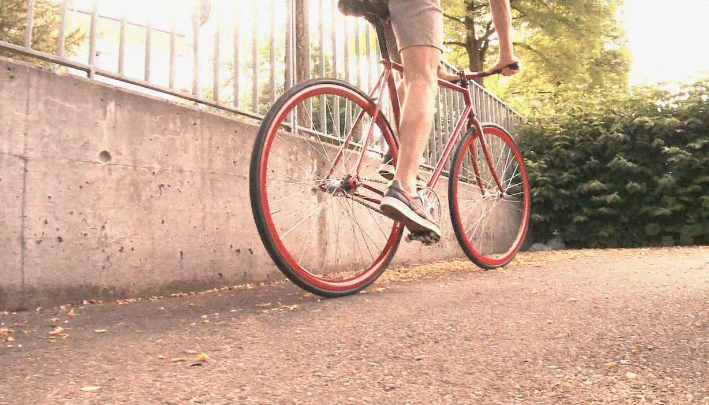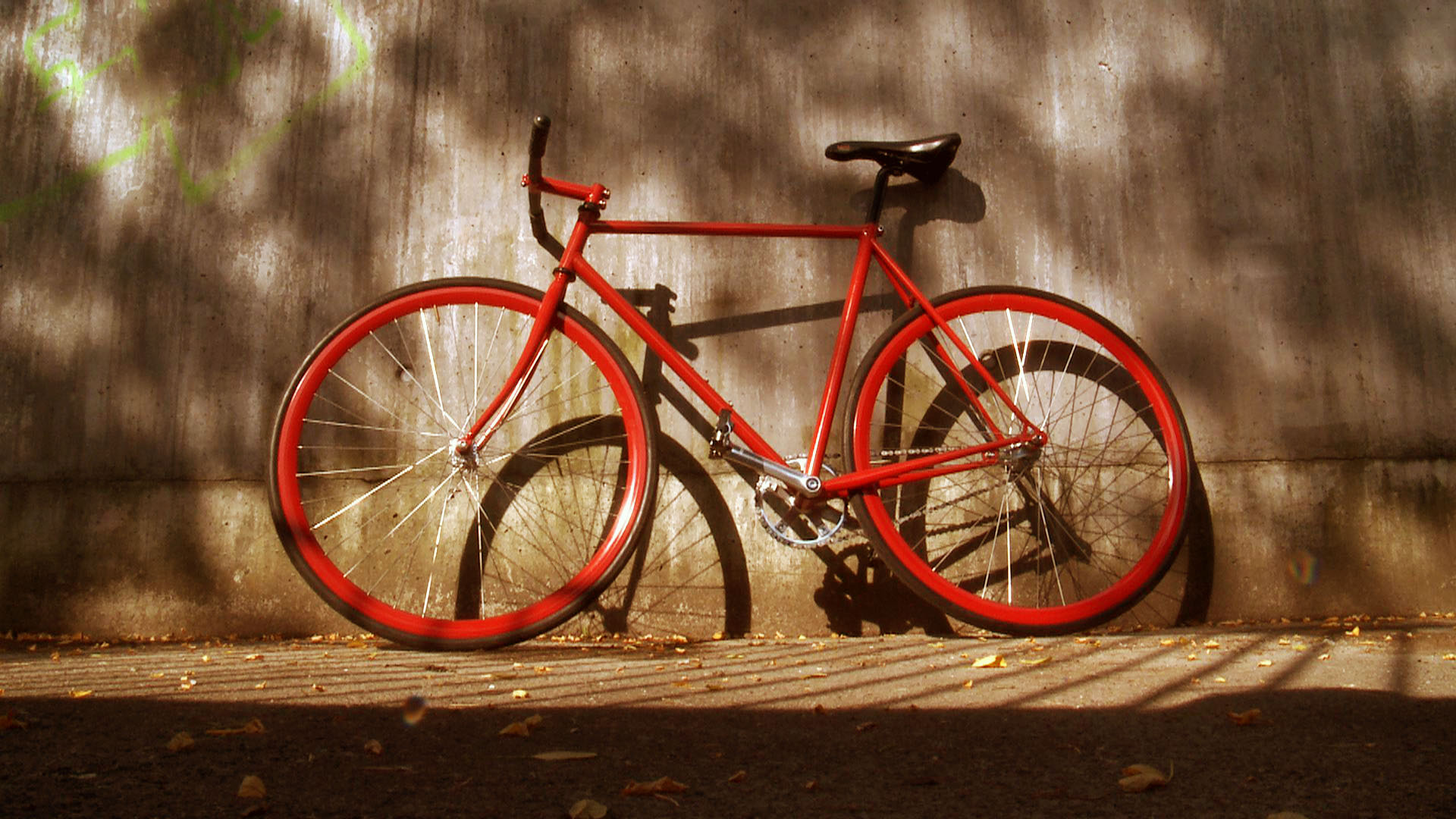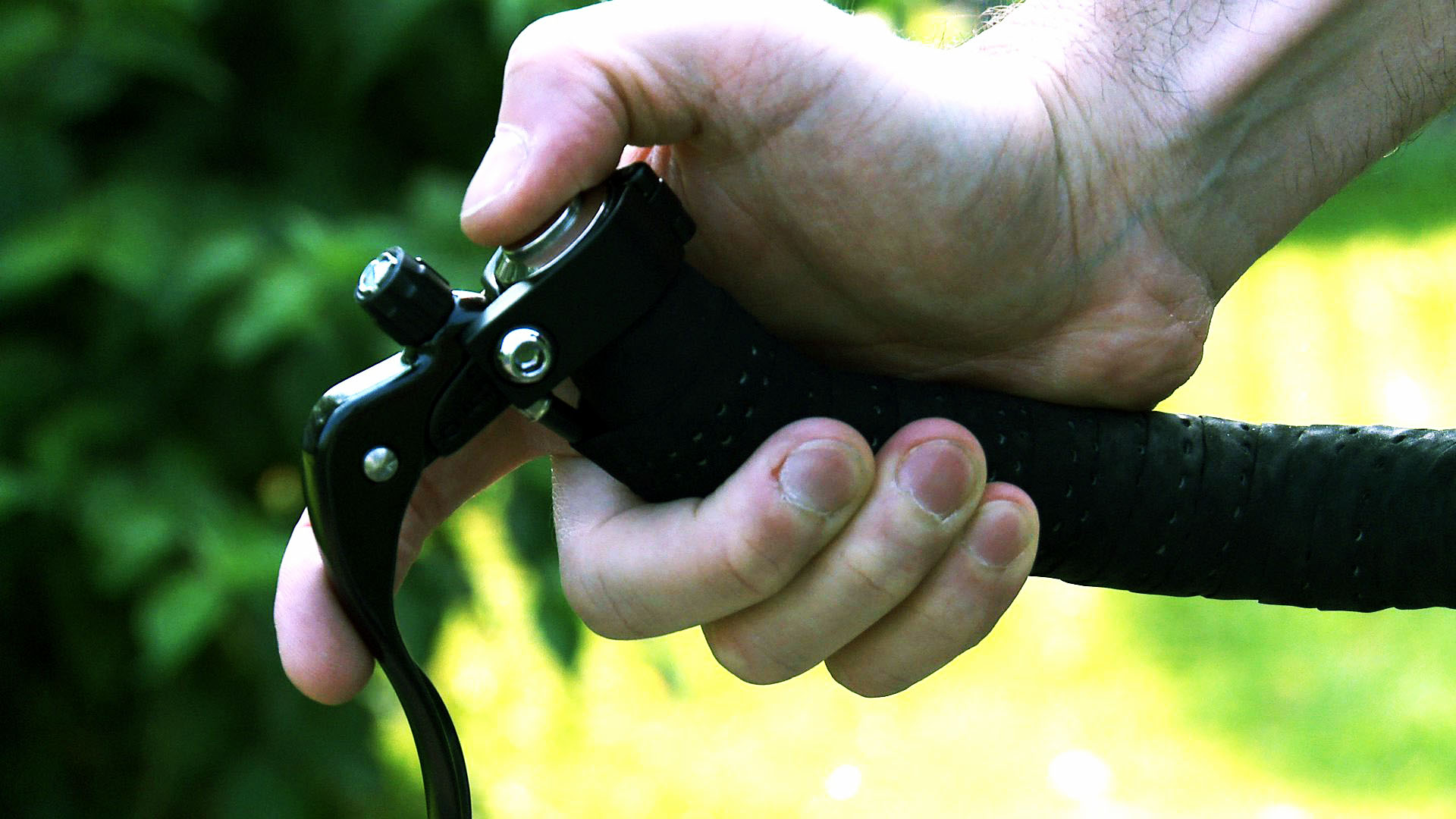The bike, reborn as a fashion statement

From purist fixed-gears to elegant retro models, today’s urban streets are full of bicycles that meld aesthetics and pleasure. Just a few decades ago, two-wheeled transport was in crisis. What’s behind the renaissance?
A thin steel frame, two wheels, two pedals, a chain, a seat: fixed-gear bikes, known as “fixies”, represent the reduction of the bicycle to its simplest technical and aesthetic state.
“On a fixie, there’s not much left to leave out,“ Marius Graber, technology editor at the trade magazine Velojournal, tells swissinfo.ch, adding that this makes fixed-gear bikes durable, but it also means the rider needs to be able to handle pedalling with just one gear.
“For me, fixies are high heels for men,” he says. “High heels are uncomfortable, but many women buy them and like to wear them.”
“It’s a great victory that people today like to show off their trendy bicycles. Nothing better could happen than the bike becoming a fashion statement.”

More
New steel-frame bike has a sporty history
Wealth of options
But there is a downside for those who can only afford cheap models at less than CHF300 ($316): they might be sacrificing quality – even safety – for looking cool. “That’s the risk of this trend,” Graber admits.
“The aesthetic components and the fun factor are most important,” says Reto Lütscher, who has managed the Fixieshop bicycle store in Basel for just over a year. His offerings range from “fun and colourful bikes”, costing around CHF800, to high-quality, lightweight models with price tags of up to CHF7,000.
Graber views fixies as “the extreme example of a general trend” towards more elegant bikes. Although true fixed-gear models will likely remain a trend among a select few, Graber says they have a stylistic function since “more and more bicycles look like fixies on the outside but have a second gear system that offers between two and eight gears.”
He also firmly believes that bikes as a fashion statement won’t disappear, but will continue to broaden their influence. The sheer number of bicycles is increasing, be they e-bikes or cargo bikes that can transport children, dogs or large items. There, Graber sees the “imprint of a new culture of mobility”.

More
A day at the races, delivering packages
Fixies in fashion
Resurrected from history by the bike courier scene, the fixed-gear bicycle trend was then adopted by the creative scene, brought to the forefront by designers like Armani, Vivienne Westwood and Sonia Rykiel.
From there, fixies made their way into glossy magazine ads and then onto urban streets. The metamorphosis from archetypal bicycle to trendy casual understatement was complete.
The fact that the fashion elite stumbled upon the bicycle as an icon isn’t a coincidence to journalist and style expert Jeroen van Rooijen.
“There are thousands of types of bicycles, so they are ideal for expressing a unique personality,” he says, adding that the bike is experiencing a renaissance today for the same reason.
“The bicycle has become an important accessory for the young and young-at-heart,” he says. That has led to a new value chain surrounding bikes: in Zurich alone, he can name six or seven “bike boutiques, in the style of expensive shoe stores, where clients can purchase high-quality bicycles”.
As founder of the “Saturday Style Ride”, van Rooijen is responsible for “establishing a bicycle culture on an aesthetic level”. The 130 participants in Zurich’s most recent “style ride” showed him that such a culture is very much alive and well.
Many of them sat on so-called Retro-bikes: modern bicycles that look like models from past eras. In Basel, the store Single Speed Bicycles sells such niche models.
“It’s a return to the classic steel frames that were ousted by the popularity of mountain bikes,” says Michel Seeliger, the store’s co-owner.
His clients tend to be businessmen, bank employees, architects or lawyers older than 30 “for whom riding a bicycle has become a lifestyle. They ride their bikes to work every day, but want to do it in a stylish way, much like how they dress”.

More
A racing bike with a boost of e-power
Defining a lifestyle
Fashion stores form a part of the value chain, albeit an indirect one. In Bern, at least five clothing stores selling everything from basic streetware to high-end menswear display fashionable bicycles to catch the customer’s eye.
“The elegant bicycles embody an uncomplicated, urban lifestyle – the same way it’s expressed in our fashion, which has become less formal,“ says Jürg Welti of Herren Globus, the men’s fashion division of one of Switzerland’s largest department stores. “Today, a businessman can ride his cool bike to work in a suit, but without a tie.”
Graber says a bicycle in a clothing store would have been unthinkable 20 years ago. Since then, bikes have gained massive prestige, a trend that began with the “innovative and wild mountain bike scene” that came out of the US in the 1990s and re-invigorated the struggling Swiss bicycle industry.
“Thanks to further technical developments, the mountain bike became a high-tech machine for the masses that could also cost a fair amount.”
Back to basics
But now, the pendulum is swinging in the other direction, as more and more bike riders are overwhelmed by increasingly complex technology and want to celebrate the bicycle as an icon of minimalist aesthetics.
And the pedals continue to turn. A new trend is forming around “freak or zombie bikes”, according to van Rooijen, which involves bike fanatics building “crazy” bicycles, maybe combining the steel frame of an old classic racing bike with original parts and high-tech components like a carbon front wheel, for example.
Reto Lütscher sees another new trend in the style-blending bike courier scene: racing bikes that are ridden in all conditions and have “very widespread uses” thanks to heavy-duty tyres. Although the concept of robust wheels isn’t new, it could bridge the gap between racing bikes and mountain bikes for the everyday rider.
In the 20th century, Switzerland was home to 200-300 bicycle brands, estimates Edy Arnold, the founder and director of the national Helvetia Bicycle Museum in Brügg, near Biel, canton Bern.
With 16 manufacturers, Biel was the Swiss bike capital.
Brands like Tebag, Staco, Cilo, Villiger, Tigra, Allegro, Alpa, Eiger, Condor, Tour de Suisse, Automat, Helvetia, Schwalbe, Cosmos, Stella, Wolf, Vifian Estielli were known for their high-quality, handmade steel frames.
Today, Aarios in canton Solothurn is the only remaining manufacturer making steel bike frames in Switzerland.
The other brands have disappeared, either bought out or now produced in Asia. Because of that, a lot of know-how in building steel frames has disappeared from Switzerland.
Private enthusiasts are working to re-build that tradition, however. Their hand-soldered, artistic models can be seen at Zurich’s “Bike Lovers Contest,” a competition that takes place every March as part of the largest Swiss market for secondhand bikes and bike parts.
(Translated from German by Veronica DeVore)

In compliance with the JTI standards
More: SWI swissinfo.ch certified by the Journalism Trust Initiative

You can find an overview of ongoing debates with our journalists here. Please join us!
If you want to start a conversation about a topic raised in this article or want to report factual errors, email us at english@swissinfo.ch.